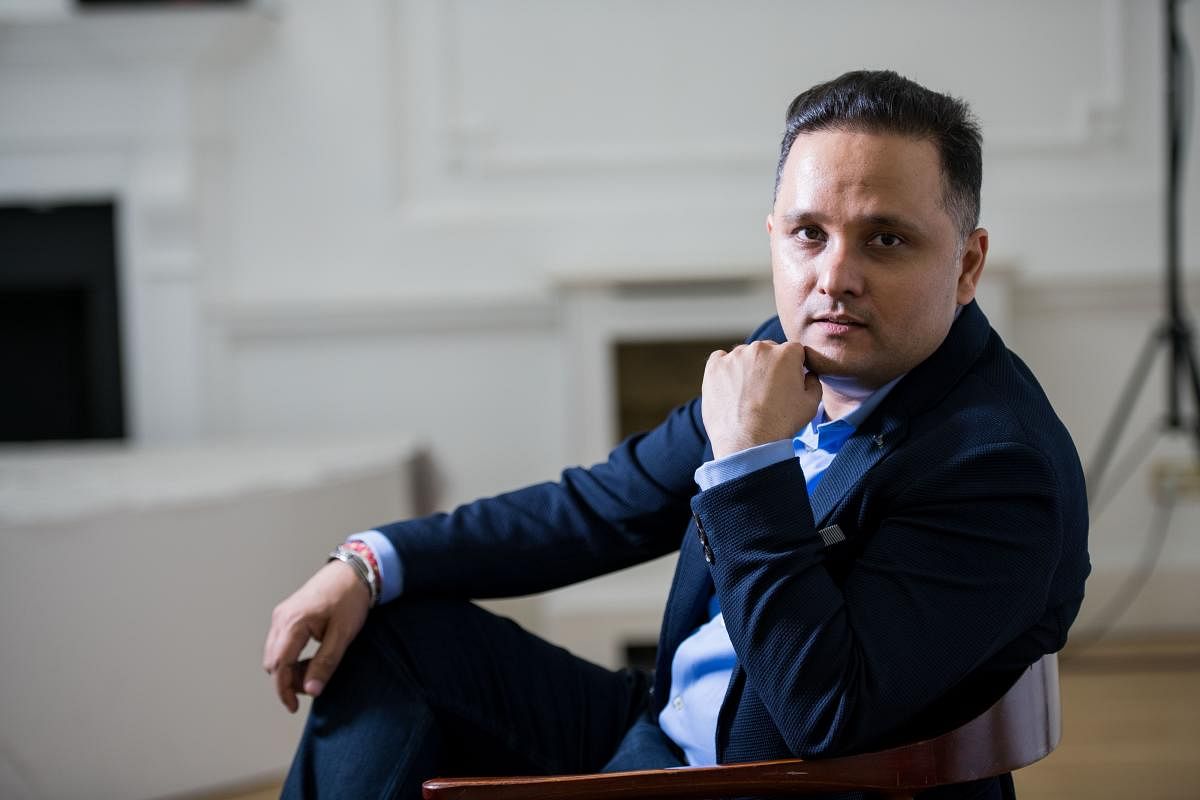
Bestselling author Amish Tripathi has an affable, genial air about him. On a whirlwind promotional tour for his latest release ‘War of Lanka’, the much-anticipated fourth book in the Ram Chandra series (the second-fastest-selling Indian series, the first being Amish’s Shiva trilogy, according to his publishers), we caught up with the author in Bengaluru for a before-breakfast chat about his books, the intersections between myth and history and how he manages to side-step controversies. Excerpts from an interview
It is refreshing, to say the least, to read about Kumbhakarna and Raavan having a wholesome breakfast of idli-sambar with Sita in Ashok Vatika in one of the early chapters of War of Lanka. You also do not hesitate to add on different layers to the characters of Sita, Ram and Raavan, humanise them and show a mirror to their many faults. How have you managed to not be trolled, land in Twitter controversies or have a case slapped against you?
I have been writing for 12 years now and I have been writing bestsellers even if I say so myself. Often, authors themselves create controversies; any publicity is good publicity, etc! I believe while Indians in general are emotional about their gods and goddesses, they are not as unreasonable as social media would have you believe. I write with deference and my readers recognise that.
I will give a favourite example of mine. There is an important scene right at the beginning of the movie ‘Bahubali’ where the character of Prabhas uproots a huge shivling, carries it on his shoulder and deposits it under a waterfall. Now imagine a story writer narrating this scene to a director: “The lead actor breaks the base of a shivling and carries it to a waterfall!” Does this sound like something any director would be brave enough to shoot? But, the fact is, it has been shot and has been accepted and iconised. That’s because people can see the intention. In the same way, readers can sense when a work is presented with truth and respect. Unlike popular perceptions, Indians are comfortable with multiple truths.
While there is a resurgence of interest in Indian mythology, there are also obvious attempts by certain sections of society to stifle artistic liberty and confine our past. What is your opinion about this dichotomy?
Artistic liberty has always existed in Indian history and culture. We have had several interpretations in the past and there will be several more in the future. As I mentioned before, anger arises when people sense a wrong attitude. People are sentimental. If someone insults your father, will you not get furious? That said, violence is unacceptable. Words can be answered with words — there is nothing wrong with that. When I put out creative work, I am exposing myself to both praise and criticism yes, not to violence, no!
Fortunately, if you look at the actual figures, India is among the least violent countries in the world. Despite our many differences, we are a peaceful nation. Don’t go by Twitter feeds — that is not the real India.
Today, there is a lot of debate about what is mythology and what is history and where the twain ought to meet (or not). Your views?
How can we be certain of what is history, what is a legend and what is a myth? In Indian traditions, we have the word Puranas and Puranas used to be considered an integral part of Indian history for a long time. In pre-colonial times, there was a thin line of distinction between myth and history, if there was one at all. It is with Western influences that the distinction began to be made because, in Western philosophies, myth is a problematic concept — myths were fabricated tales while ancient Hindu philosophers considered myths to be propagating truths. So you see, who can be sure of what is truth and what is not?